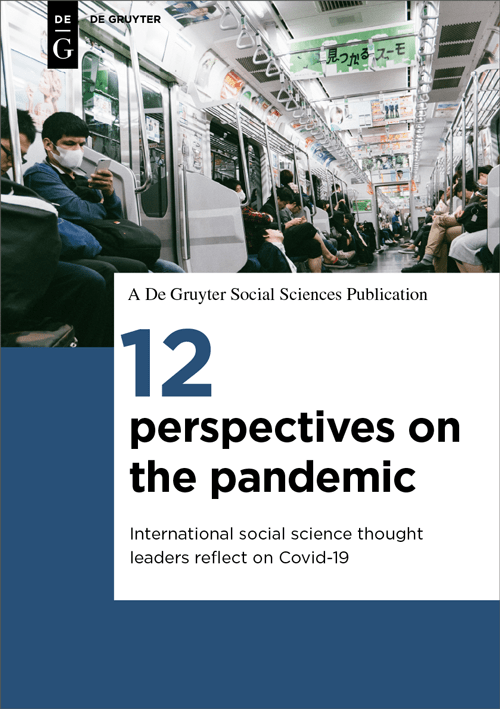The Social Problems of Protecting Refugees during Covid-19
How do we protect refugees during the coronavirus pandemic? Can the field of ‘humanitarian engineering’ help us in this endeavour?
This essay was first published in the free digital pamphlet 12 Perspectives on
the Pandemic: International Social Science Thought Leaders Reflect on Covid-19.
Whilst all groups of people are susceptible to the harm brought by SARS-CoV-2 (the virus that causes Covid-19), some groups face greater risk than others. Many experts have labeled refugees as particularly vulnerable. Refugees are more likely to live under constraints that make it more difficult for them to access accurate information, protect themselves from infection, and receive medical treatment if they become infected.
MANAGING URBAN SETTINGS
Refugees, whether they live in camps or in urban neighborhoods, frequently live in overcrowded conditions, sometimes with limited access to healthcare and proper sanitation. While many people have images of refugee camps as places with squalid conditions and flimsy tents, worse conditions usually exist in urban settings, where the majority of the world’s refugees live. Refugee camps are overseen by aid organizations or governments that locate and build shelters, distribute food and water, and provide services like education and medical treatment. Camps are organized to efficiently provide humanitarian help, even if the amount of help is inadequate. Those same provision of services are not always available in urban settings, or they are not as easily distributed.
“Refugees, whether they live in camps or in urban neighborhoods, frequently live in overcrowded conditions, sometimes with limited access to healthcare and proper sanitation.”
And because camps are closely managed, they can be closed, limiting who can enter the camp and thus restricting who might bring in infection. But there are fewer controls over movement into and within urban settings, and once community infection takes hold, it is extremely difficult to contain. Clean water may be difficult to access, electricity intermittent, and housing is often cramped. In those conditions, it is difficult for refugees to use proper sanitation like frequent hand washing, and social distancing is nearly impossible.
PROVIDING THE RIGHT INFORMATION
Providing refugees with accurate information is also challenging. Written communication needs to be translated into languages that they understand, and not everyone in a refugee community may be literate. In some settings, governments and aid agencies have relied on radio to communicate, but that can lead to multiple refugee households gathering around a limited number of radios to hear news and instructions, which increases the chance of infection.
Very few refugees are resettled permanently in a safe country. Most live in conditions of legal limbo in a country where they do not have citizenship; sometimes they may only have permission to remain in the country short-term. Whilst in that limbo, they are unable to fully access local job markets and healthcare services, and remain dependent upon aid agencies for material resources. During this pandemic, that often means volunteers helping aid agencies or acting on their own are no longer able to provide help, or in some cases, volunteers are a source of potential infection spread.
Policies towards refugees and asylum seekers have made conditions worse. Most governments have stepped up efforts to repel refugees and asylum seekers by increasing deportations, coercing refugees to ‘voluntarily’ return to their countries of origin, or forcing them to remain in low-income third ‘safe’ countries that often do not have the public health infrastructure to protect against spread of the disease. While governments have claimed that these policies are designed to protect against the spread of Covid-19 within their borders, infection from the native population can spread the virus to refugee populations, and through forcible return, those refugees take the infection to back to their home country or the ‘safe’ third country.
These problems related to protecting refugees from Covid-19 are social problems. We know the importance of social distancing, but how do you maintain physical space between people at a water distribution center in a refugee camp? We know older people are more vulnerable to the virus, but how do you protect older refugees when they live in multi-generational households in overcrowded urban slums? We know hand washing can reduce the spread of the disease, but how do you ensure that refugee children have soap when supply transports to remote refugee camps are disrupted because of the pandemic? In other words, we already know the medical science behind the need for hygiene, and we know the engineering necessary for constructing physical spaces that allow for social distancing, but we still need social scientists to examine the conditions of refugees’ lives and explore solutions to the barriers that are keeping refugees from being safe and healthy.
HUMANITARIAN ENGINEERING
A field that has recently emerged to provide these solutions is ‘humanitarian engineering.’ It combines such fields as sociology, political science, economics, and history with engineering and public health to provide solutions to humanitarian problems. It centers human and community welfare within the goals of designing and building infrastructure, rather than focusing only on mechanical or biomedical aspects. Humanitarian engineering has married social sciences with physical and biological sciences to address a range of intractable problems in humanitarian intervention, and it will be increasingly important as we address the particular vulnerabilities of refugees to this pandemic.
Learn more in this related title from De Gruyter
[Title Image via Getty Images.]
